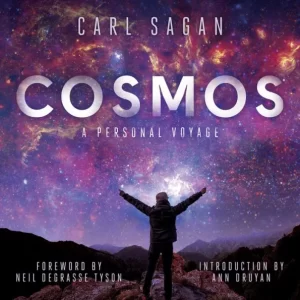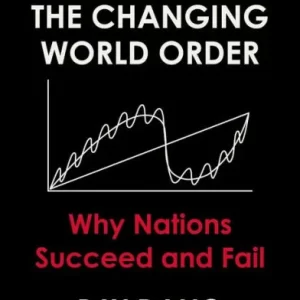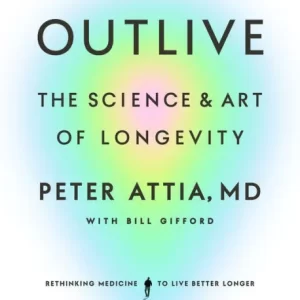I. Introduction
A. Carl Sagan’s “The Demon-Haunted World: Science as a Candle in the Dark” stands as a beacon of rationality in an age often clouded by superstition and pseudoscience. Published in 1995, its relevance persists, offering a compelling exploration of the vital role of scientific thinking in navigating the complexities of our world. Sagan, an astrophysicist and prolific science communicator, delves into the critical importance of skepticism, empirical inquiry, and the scientific method in distinguishing between reality and delusion.
B. Carl Sagan, a renowned astronomer, cosmologist, and science communicator, captivated audiences with his ability to make complex scientific concepts accessible to the public. Through his work on the “Cosmos” television series and numerous books, Sagan cultivated a deep appreciation for scientific inquiry and critical thinking among a broad audience. “The Demon-Haunted World” represents a culmination of his efforts to illuminate the wonders of the universe while advocating for a rational, evidence-based approach to understanding it.
C. This review will examine Sagan’s “The Demon-Haunted World” through the lens of its efficacy in promoting scientific literacy, combating ignorance, and fostering a spirit of inquiry. By analyzing Sagan’s arguments, rhetorical strategies, and the enduring relevance of his message, this review aims to evaluate the book’s impact and its enduring relevance in an era marked by scientific misinformation and intellectual complacency. Through this evaluation, the review will ultimately assess the book’s contribution to the ongoing dialogue surrounding science, skepticism, and the quest for truth.
II. Background and Context
A. Carl Sagan’s background and expertise in science and astronomy:
Carl Sagan, a prominent figure in the scientific community, was an American astronomer, cosmologist, astrophysicist, and author. He played a significant role in popularizing science, particularly through his television series “Cosmos,” which reached millions of viewers worldwide. Sagan’s deep understanding of astronomy and his ability to communicate complex scientific ideas to the public made him a respected figure in both scientific and popular circles.
B. Historical context of the book’s publication (1995):
“The Demon-Haunted World: Science as a Candle in the Dark” was published in 1995, a time marked by significant scientific advancements but also growing public interest in pseudoscience and paranormal phenomena. The book emerged against the backdrop of widespread misinformation and the rise of pseudoscientific beliefs, fueled in part by the proliferation of mass media and the internet. Sagan aimed to address these challenges by advocating for the importance of scientific thinking and skepticism.
C. Overview of prevalent pseudoscience and skepticism in the 20th century:
The 20th century witnessed a surge in pseudoscientific beliefs, ranging from astrology and UFO sightings to faith healing and psychic phenomena. These beliefs often thrived in the absence of critical thinking and scientific scrutiny, exploiting gaps in public understanding of science and the natural world. Sagan recognized the dangers of such thinking and sought to promote scientific literacy as a means of combating ignorance and superstition.
III. Summary of “The Demon-Haunted World”
A. Synopsis of the central themes and arguments presented by Sagan:
In “The Demon-Haunted World,” Sagan explores the importance of scientific skepticism and critical thinking in navigating an increasingly complex world. He argues that society must embrace the scientific method as a tool for understanding reality and distinguishing between truth and falsehood.
B. Exploration of Sagan’s analogy of “Science as a Candle in the Dark”:
Sagan’s analogy of “Science as a Candle in the Dark” emphasizes the role of science in illuminating the unknown and dispelling ignorance. Like a candle in the darkness, science provides enlightenment and guidance, enabling humanity to confront the mysteries of the universe with courage and curiosity.
C. Discussion of key chapters and ideas, including the role of skepticism and critical thinking:
Throughout the book, Sagan delves into various topics, including the nature of scientific inquiry, the allure of pseudoscience, and the importance of skepticism in evaluating extraordinary claims. He emphasizes the need for rigorous evidence-based reasoning and encourages readers to question authority and think critically about the world around them.
Overall, “The Demon-Haunted World” serves as a passionate defense of science and reason in an age of misinformation and superstition. Sagan’s eloquent prose and profound insights continue to inspire readers to embrace the wonder of scientific discovery and confront the unknown with an open mind and a skeptical eye.
IV. Analysis and Critique
A. Carl Sagan’s writing style in “The Demon-Haunted World: Science as a Candle in the Dark” is marked by clarity and accessibility, making complex scientific concepts understandable to a general audience. His use of analogies and anecdotes effectively engages readers, facilitating comprehension without sacrificing depth. Sagan’s ability to blend scientific rigor with eloquent prose enhances the book’s appeal and educational value.
B. The book excels in promoting scientific literacy and fostering skepticism towards pseudoscience. Sagan meticulously dissects popular myths and misconceptions, offering logical explanations grounded in scientific principles. By encouraging critical thinking and empirical inquiry, Sagan empowers readers to discern between genuine scientific inquiry and pseudoscientific claims. However, some may argue that Sagan’s arguments primarily resonate with readers already inclined towards skepticism, potentially limiting their impact on individuals entrenched in pseudoscientific beliefs.
C. “The Demon-Haunted World” remains profoundly relevant in the contemporary context, where misinformation and pseudoscience proliferate through various media channels. Sagan’s emphasis on the importance of scientific skepticism and evidence-based reasoning resonates strongly amidst the deluge of misinformation. The book serves as a beacon of rationality, inspiring a new generation of science communicators to champion critical thinking and scientific inquiry.
D. While Sagan’s approach is commendable, the book occasionally overlooks socio-cultural factors that contribute to the persistence of pseudoscientific beliefs. Addressing the underlying motivations driving individuals towards pseudoscience could enrich the book’s analysis and enhance its effectiveness in combating misinformation. Additionally, Sagan’s optimistic portrayal of science as an unassailable force for good may overlook its potential for misuse or ethical dilemmas, warranting a more nuanced discussion of science’s societal implications.
V. Personal Reflection and Connection
A. “The Demon-Haunted World” profoundly impacted my perspective on science and skepticism, instilling a deeper appreciation for the scientific method and critical inquiry. Sagan’s impassioned plea for intellectual vigilance inspired me to question assumptions and seek evidence-based explanations in navigating the complexities of our world.
B. The book’s memorable anecdotes, such as the “baloney detection kit” and the “dragon in my garage,” vividly illustrate the importance of skepticism and empirical evidence in evaluating extraordinary claims. These insights continue to resonate with me, serving as guiding principles in discerning truth from fiction.
C. Reading “The Demon-Haunted World” reshaped my understanding of the intricate relationship between science and society. I came to recognize science not merely as a body of knowledge but as a transformative force that enriches our collective understanding of the universe. Moreover, Sagan’s advocacy for scientific literacy underscored the indispensable role of education in fostering informed citizenship and advancing human progress.
VI. Conclusion
In “The Demon-Haunted World: Science as a Candle in the Dark” by Carl Sagan, the review has underscored its pivotal themes: the necessity of scientific inquiry, the perils of pseudoscience, and the importance of skepticism. Sagan’s work remains an indispensable guide for navigating a world inundated with misinformation. Its enduring significance lies in its advocacy for critical thinking and empirical evidence. Carl Sagan’s legacy endures as a beacon for scientific literacy, urging us to question, explore, and understand the universe with clarity and reason. In an era ripe with uncertainty, his words continue to illuminate the path towards enlightenment.



